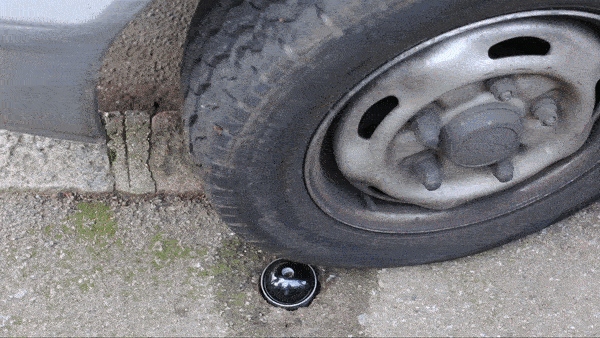
We find it profoundly regrettable that the Government has taken so long to take any action to deal with pavement parking. So says a recent report by the parliament’s Transport Committee – a body appointed by the House of Commons to examine the expenditure, administration, and policy of the Department for Transport.
Their frustration is understandable. Fours years ago the government promised to look into the issue of pavement parking in England. However, since then, consultations, round table meetings and internal reviews have failed to lead to any meaningful action.
People with mobility difficulties or visual impairments and people who care for others are adversely affected by pavement parking and children are at particular risk. Quite apart from the physical danger it creates for pedestrians, pavement parking damages paving stones and kerbs and generally brutalises the built environment.
Pavement parking and the law
With the exception of heavy goods vehicles, it is not a criminal offence to park on the pavement, however it is a criminal offence to drive on to the pavement, whether there is an intention to park or not.
It is not always clear who is responsible for taking enforcement action when a vehicle is parked on the pavement. The police can fine people for obstruction of the highway, which includes cars parked on the pavement that impede pedestrians. Unfortunately, there is currently no clear legal definition of obstruction.
Furthermore, obstructive pavement parking is not a high police priority. Obstructive parking could be dealt with by local authorities, in most cases they already have parking enforcement staff in place and want to enforce. The Transport Committee recommends that a new civil offence of obstructive pavement parking is created, and enforcement become the responsibility of local authorities. They recommend that in the long term a ban on pavement parking is put in place across England, outside London, with a new process for exempting areas from the ban that is not as expensive or complicated as the current Traffic Regulation Order (TRO) process.
In summary, the Transport Committee says: We are deeply concerned about the Government’s failure to act on this issue, despite long-standing promises to do so. We appreciate that this is a thorny problem that may be difficult to resolve to the satisfaction of all, but the Government’s inaction has left communities blighted by unsightly and obstructive pavement parking and individuals afraid or unable to leave their homes or safely navigate the streets. Scotland is currently legislating for a national ban, while London took action to tackle this issue forty-five years ago. The Government must act to improve the situation in the rest of England and it must do so quickly.
Lat year, the ETA helped push the issue up the news agenda by launching the Catclaw.

The Catclaw is an extreme idea that is unlikely to be practicable, or even legal. Other than the sharpened spike hidden within, what, you may well ask, is it’s point. The purpose of the project is to highlight the plight of the 43 people killed last year on pavements in Britain by drivers and the many thousands of pedestrians every day who have their path blocked.

Is this the only way drivers will understand that driving on pavements is dangerous not to mention illegal?
The Catclaw served as a Trojan horse that allowed us to talk at some length about the need to radically alter the way we tackle road danger in all its forms. It gave us a voice in a televised discussion about road danger that involved a serving member of Parliament. Elsewhere in the media, the project has generated coverage in numerous titles including The Daily Mail, The Express, The Mirror, Metro, The Manchester Evening News…not to mention the tens of thousands of Twitter users who engaged with the story and over 116,000 folk on YouTube who watched our film about it.
The systematic approach to road danger reduction Britain so badly needs will not involve Catclaw or anything remotely as outlandish. As has happened in countries such as Sweden, it involves placing people’s needs ahead of cars. The benefits of such an approach are numerous, but include safer roads, reduced healthcare costs, greater independence for children and increased quality of life for all. However, change of this kind can occur only once people – as opposed to politicians – consider it vital. And that process starts with getting it talked about. It’s one of the reasons we made a documentary about road danger.
The work of The ETA ranges from awareness-raising projects like the Catclaw, to community roadshows promoting sustainable transport, to helping schools mount protests to demand safer road crossings. Supporting these is easy. Simply buy your home insurance, cycle insurance, travel insurance and breakdown cover and you will be helping to fund these projects and many more besides. And you can rest assured that by choosing us you will not be compromising on quality or paying over the odds – we’ve been around for over 27 years and are rated as ethical by The Good Shopping Guide.

Vincent Edwards
This isn’t the first time there has been government inaction over pavement parking. In 2001 a Select Committee recommended legislation but the government fell for the argument that if motorists did not park on the pavement they would block the road and emergency vehicles would not get past. It’s true that in some streets cars parked fully on the road would cause such an obstruction (in which case they should be towed away at the owner’s expense) but in fact much of the worst pavement parking occurs in leafy suburbia in areas where roads are wide, everyone has a driveway (and even a garage) but motorists have got so used to parking on the pavement they do it anyway – often parking across the entrance to their empty driveway.
The latest report recommends that pavement parking be prohibited but that local authorities be allowed to make limited exceptions in areas where roads are narrow and parking really difficult. That compromise may be a way forward (though local authorities fear the expense of putting up signs and painting white lines along the pavement). But most pavement parking is the product of laziness and thoughtlessness, and does not arise out of any “necessity”. I hope this government has the guts to do something this time, though I am not holding my breath!